Senegal makes a great starting point for a West Africa trip: it’s visa-free for most nationalities, you can pick up visas for onward travels in Dakar, and it’s a good introduction to the road ahead. There’s plenty of infrastructure along the coast especially and you can get a feel for what it’s like to travel in the region, but also relax along the way on nice beaches and eat good food.
This travel guide is about travelling by public transport along the coast south of Dakar (the Petite Côte): how to get around, things to see and do on the way, and some general practical information as well.
Is Senegal Safe?
Solo Female Travelers
Visas
What to Expect (or What Not to Expect)
Transportation
Accommodation
Money and Costs
Arriving at Blaise Diagne International Airport
Dakar
Toubab Dialao
Mbour
Onward Travel from Senegal
Packing List
Is Senegal safe?
Senegal is one of the most stable countries in West Africa. The separatist fighting in the Casamance region that resulted in travel warnings from most foreign governments is not an issue anymore. You can check what your own government has to say. When you’re on the road in the Casamance you might pass through checkpoints where you’ll have to show your passport to the police.
Like many countries in this part of the world, your biggest problem by far is the roads (and the vehicles you’ll be in on them).
There is some amount of hassle from touts here in touristy areas along the coast, in Dakar, and around public transportation. They can be really persistent and aggravating.
Just be sensible: watch out on deserted beaches, even during the day. Dakar is not a place you want to explore after dark. Don’t be on the roads at night. There’s a good chance you’ll be carrying larger amounts of cash – split it up.
Solo female travelers
Solo female travelers can expect a fair bit of hassle from beach boys: guys who will approach and attempt to befriend you on the beach, or follow you around, constantly. They aren’t threatening – just annoying. Ignore them.
In general, as a woman traveling alone in Senegal I felt safe and didn’t notice a particular difference from the previous time I traveled in Senegal with my husband. Unlike in a lot of other predominantly muslim societies, in Senegal there are just as many women around as men, and I never found myself being the only woman in the room/vehicle/street etc. which made me more comfortable, as a solo female traveler. You should consider how you dress: skirts and tee shirts are fine, just err on the side of modesty.
Visas
Most nationalities don’t need a visa for Senegal which makes just flying in and entering really simple for a change. Dakar is a good place to pick up visas for onward travel to other West African nations.
What to expect (or What not to expect)
As I mentioned above, Senegal makes a good introduction to West Africa. That being said, travel in West Africa is significantly harder than in other parts of the continent – for example, it’s not at all like Southern Africa. It’s less developed, it’s rougher, there is much less tourism (in some cases almost none), things go wrong, there isn’t a lot in the way of ‘amenities’ that make a holiday go smoothly. Overall, I wouldn’t recommend independent overland travel in Senegal for your very first trip to Africa.
There is a fair bit of tourism along the coast in the beach resorts. Off the resorts it dwindles noticeably. There isn’t a big travelers’ scene and you won’t find a raft of beach bars and city cafes to hang out at, although there are definitely some here and there. I was in Senegal during high season (twice) and most places I went felt practically deserted (I’m fine with that).
Language can be a real barrier. If you don’t speak French, learn some: at least numbers and key words for directions, travel and transportation.
WiFi can be difficult to find and it will almost always be slow and unreliable. In small towns your guesthouse might not have it. You can of course get around this by buying a local SIM card before you leave Dakar.
The rainy season runs from July to September. The winter (November to February) is the dry season and apparently also the busiest time but advance bookings still aren’t necessary.
Transportation
You can get around Senegal on public transport. It’s definitely uncomfortable and not very safe (bad vehicles, bad driving) but you can get where you need to go. You can forget about seatbelts in a taxi or sept-place (beat up old station wagons that take seven passengers and generally are not roadworthy). Drivers are often reckless. You should stay off the roads after dark.
Sept-places leave from any town’s Gare Routière when full. Sometimes prices are posted, sometimes not. You will very often be charged extra and totally at random for your luggage – bargain for it. Wherever you are going, set off early and allow extra time to wait for the car to fill. However long you think a trip will take – it will almost definitely take longer. When you arrive in a town, don’t try to get a taxi to your guesthouse from inside the Gare – go out into the street (it’ll cost less).
If you’re staying somewhere for a while and you find a taxi driver you like, get his WhatsApp number and book him when you need a ride. Be careful with taxis: if you’re going out at night book one through your hotel, don’t flag one in the street if you can help it.
Collectives – shared-taxis, often run around the streets on more or less set routes – not door-to-door, you’d get out at the closest intersection or landmark. Flag him as he passes and make sure he’s going your way. You pay by the seat, generally 100 CFA in town. You can usually make a collective taxi private by buying up all the seats.
Before you book a taxi to the airport or plan a day trip, ask your guesthouse what it should cost. Talk to a few taxi drivers and bargain hard or see if the guesthouse can help you to arrange it.
Accommodation
There are some hostels, and they are nothing like the hostels you’ll find in SE Asia or the West. In the capital you have plenty of big, expensive hotels. If a western luxury hotel (at inflated prices) is what you’re after, then you can certainly get it. There are plenty of basic hotels, a lot of nice guesthouses, and beach lodge/holiday resort-type places.
Money and costs
Currency: CFA – the West African/Central African Franc
There are lots of ATMs in Dakar and other cities/big towns. Smaller villages don’t have them so don’t leave town without making sure you have enough cash to last. ATMs go out of service pretty often, and run out of cash on weekends on a regular basis so don’t wait until your cash is down to nothing to get more out.
Bring a couple of hundred USD with you to Senegal as a backup – it’s easy to change as needed. Credit cards are not really used outside of major hotels and restaurants.
When you withdraw cash and get ‘huge’ notes (i.e. 10 000 CFA which is about 17 USD), break them as soon as you can. Make it your mission to get change and hang onto it for dear life – it’s practically impossible to pay for things like water and short hops in taxis without small notes/close to exact change.
Senegal is not the cheapest destination – but for West Africa, it’s not too bad. The hotels I mention in this guide cost 16 – 20 USD for a single and 33 USD for a double, dorms for 8 – 10 USD. Public transport is a bit arbitrary but an average day trip or medium distance generally cost from 3.50 – 8 USD. You can eat in a local place for about 5 USD but it will cost you more when you start in on the grilled fish and seafood. Adding in extra for things like activities and eating at international restaurants and good places in Dakar, one person can comfortably travel here for 50 USD per day, or less than that depending mainly on your room and long-distance travel days. For a couple sharing rooms, it’s a lot easier to keep costs down.
Arriving at Blaise Diagne International Airport
The ‘new’ airport is about 50 km from Dakar. It takes about an hour to the city in a taxi, and costs 18 000 – 25 000 CFAs.
Another option is to go to Toubab Dialao instead. It’s a little coastal village about 20 km away from the airport, and makes a good starting point for travelling south along the coast.
There are ATMs in Arrivals (case in point for my distrust of ATMs – there were four in the airport and only one actually worked).
Dakar
Home to about 1.2 million people, as African cities go, Dakar is not really overwhelming and there are good things to do in and around the city. Plus, there are good restaurants, bars and cafes.
I stayed at Via Via in Yoff. They have basic single rooms (12 000 CFA) with a pretty terrible shared bathroom, but a nice garden restaurant with ok food. There are places out in the street with cheap local eats. It’s walking distance to the beach and it also felt comfortable and secure (I was alone).
On my previous trip, I stayed at Hotel Al Baraka. It’s nothing special (for the price) but the location is good, not far from Plateau, making it very walkable to good restaurants – like Farid, which is a great Lebanese place, or Le Lagon, which is decorated to look like a ship and has a long terrace on stilts.
Dakar – things to see and do
- If your hotel has a pool or private beach, I’d recommend using it. The city’s public beaches aren’t up to much. Yoff is ok for a long stroll and it’s clean. There are some cafes and restaurants along it, and a surfing school. N’Gor beach is nice and lively.
- Île de N’Gor. Get a taxi to N’Gor asking to be dropped at the ’embarke’. Walk down onto the beach. You’ll immediately be accosted by guys trying to get you into a private boat to the island. There is a public pirogue that runs pretty often with no apparent notice, costs 1000 CFA return and takes just a few minutes. On the island you can walk around (there are no vehicles), check out the little markets, and the beaches.
- Île de Gorée. There’s a big public ferry that goes from the Gare Maritime roughly every two hours all day long, and takes about 20 minutes. Gorée is a beautiful, flowery, colourful place – with a dark history. Visit the Maison des Esclaves, a former slaving merchant’s house.
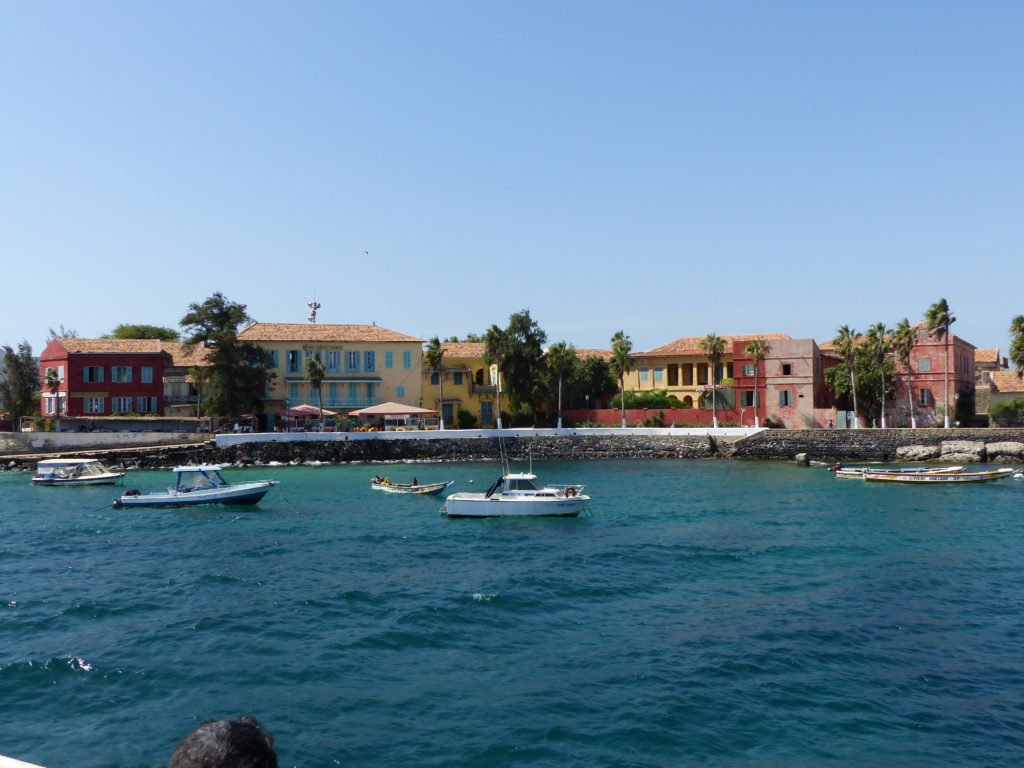
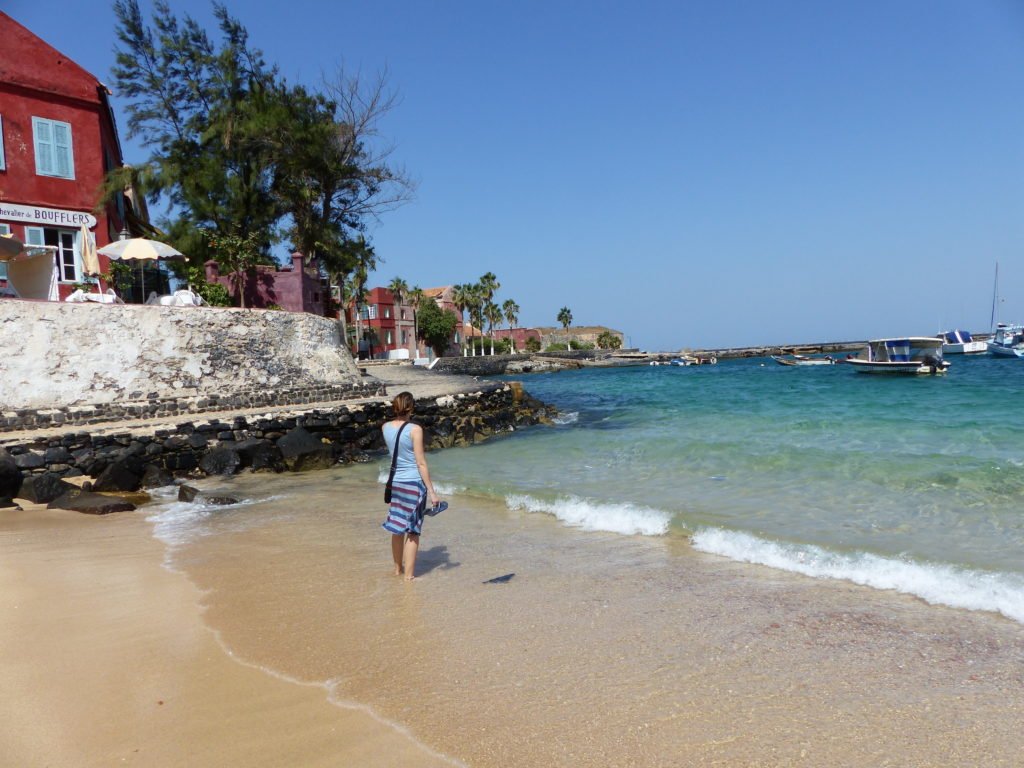
Toubab Dialao
Travel in Senegal is all about trawling through the coastal towns south of the capital, starting with Toubab Dialou. Down sandy country lanes, it’s a tiny village with a short rocky beach and lots of pretty outlook points from the village on a cliff overlooking the water.
How to get from the airport to Toubab Dialao
Toubab’s a lot closer to the airport than Dakar is. If you’re going straight there (or back) organising a ride with your guesthouse is the easiest option and costs around 13 000 CFA. Coming from the Gare in Dakar, it takes about 1.5 hours in a sept-place.
Toubab Dialao – things to see and do
There really isn’t much to do here: that’s the beauty of it.
- Walk around the little village. There are lots of handicraft stalls set up.
- The beach is really nice and it’s not busy.
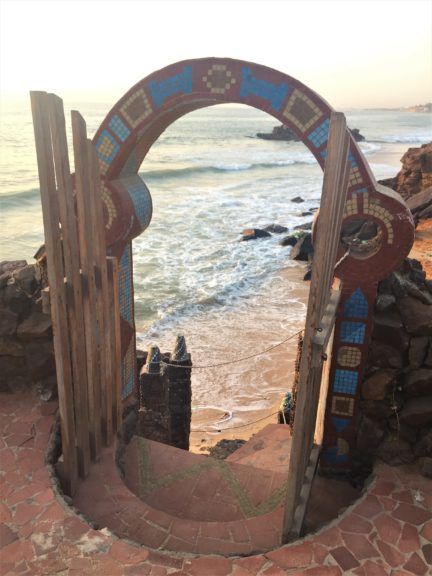
The basics
Food. Sobo Bade is a cool, really chilled out pretty place on the cliff overlooking the beach and they do good food. Walking up the beach there are some restaurants that do good fresh fish and seafood.
Beds. I stayed a couple of nights at Keur Dofie (10 000 CFA for a single). It’s absolutely lovely, with a pretty garden and pool. I also stayed a couple of kilometers away from Toubab in a village called Kelle where there is a hostel named Begue Pokai. It’s cheap, kind of awful, and serves a horrible breakfast (6500 CFA dorms). Sobo Bade also has dorms (5000 CFA) and is way better value. To get to Begue Pokai take a collective from the Gare in Toubab to the cutoff on the main road in Kelle. From there you’ll need to walk a short distance off the road to find the (very badly signed) hostel – don’t do this at night. During the day you can easily walk between the villages, it’s only a couple of kilometers.
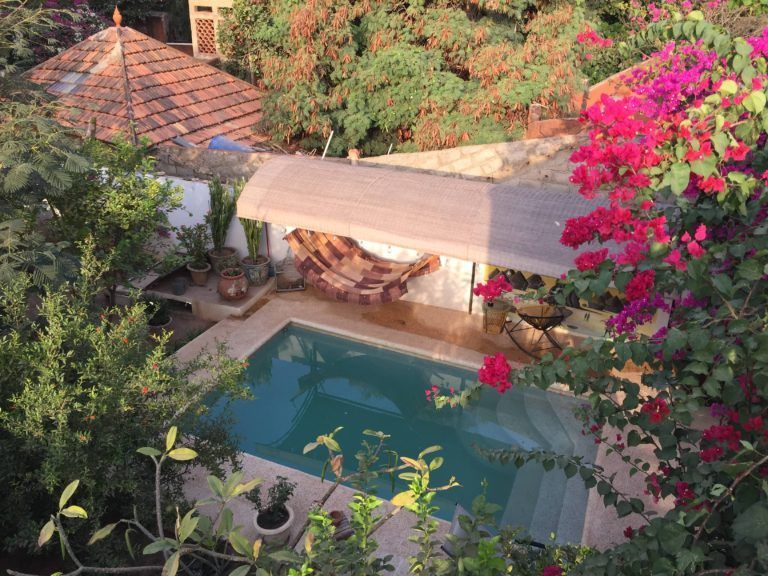
Transport. You don’t need transport in Toubab Dialao. There is a Gare where you can get sept-places for longer trips and collective taxis on to the next villages.
Money. There are no ATMs in Toubab. Bring cash – the closest ATM is in Mbour.
Mbour
Mbour is the major town on the Petite Côte. I like it: there’s a really beautiful beach and some good places to stay. It’s also a handy base for day tripping. Apparently it is less touristy than Saly, where you find all the big beach resort-type places. I didn’t go to Saly, but I can definitely say that Mbour is not crowded with tourists.
How to get from Toubab Dialao to Mbour
It takes a couple of steps and looking at the map, it’s a roundabout route to say the least, but this is how it goes by public transport (and it only takes a few hours):
- Toubab Dialao to Diamniadio. Take a collective taxi from the Gare in Toubab for 300 CFA per person.
- Diamniadio to Mbour. The taxi will drop you in Diamniadio where all the transport congregates (tell him you’re going to Mbour). There are a lot of sept-places and minibuses and touts will tell you there is no car going, to get you onto the slow, crazy-crowded bus to Mbour. Don’t listen: there are definitely sept-places going for 1000 to 2000 CFA per person.
- From the Gare. Get out at the big Gare on the very edge of Mbour. In the street out in front of the Gare, you can flag a collective to go the rest of the way into town. Collectives will drop you at the station of sorts near the Grand Hôpital.
Mbour – things to see and do
- Check out the big modern mosque near the Gare.
- The beach is really long and beautiful, and there are several bars and cafes for lounging. Blue Africa rents sunbeds on their beach under the palms. It’s perfect.
- Walk way up the beach to where the fishing boats pull in. There’s a big, frantic, smelly fish market there.
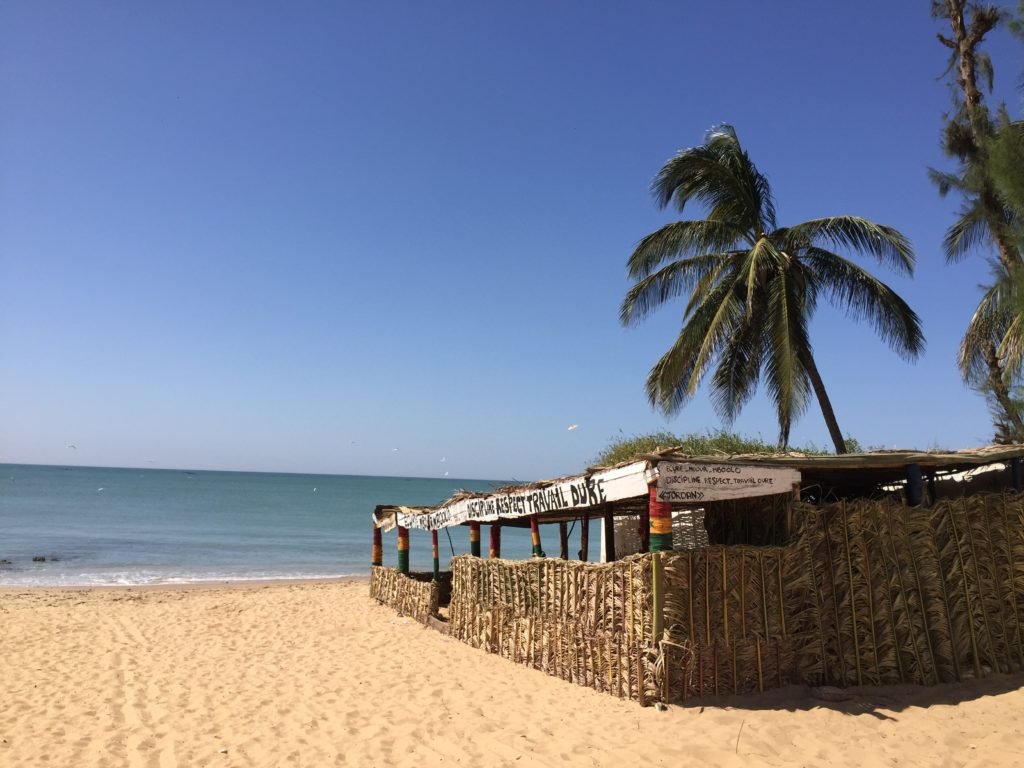
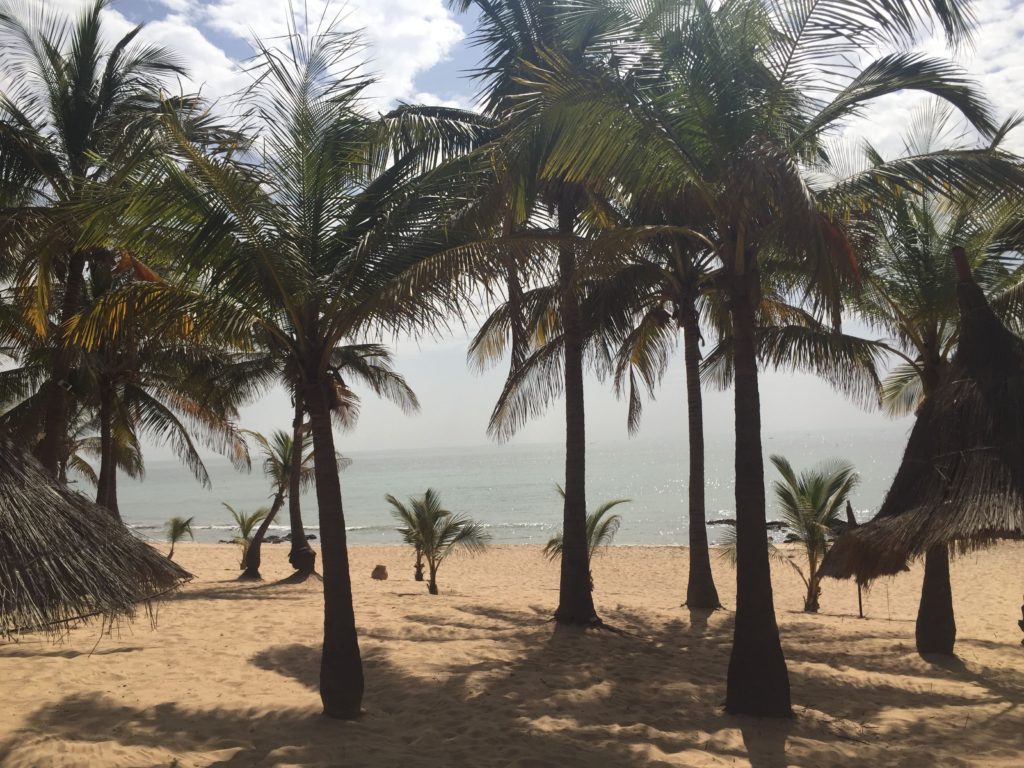
Day trips around Mbour
Mbour is a good base to stay at for day tripping.
Joal – Fadiout
Joal is a fishing village. Fadiout is an island connected to the village by a wooden bridge. Everything on the island (buildings, the cemetery) is made out of shells. Joal is about a 1.5 hour drive from Mbour. To get there:
From the Gare in Mbour, find a minibus or sept-place going to Joal, for 750 CFA per seat. Get out at the Gare in Joal and go out into the street. You can walk or get into a collective going the short distance to the Fadiout roundabout and you’ll see the bridge there. You don’t need a guide or a ticket to cross the bridge.
Sine-Saloum Delta – boat trip
Wetlands filled with exotic birdlife. Spend a half day drifting along channels in the mangrove swamps on a pirogue, past little sand islands flapping with hundreds of birds, particularly the main ‘island’ in the delta, Île des Oiseaux. Boat trips are expensive, try to get a group together.
The easiest way from Mbour is to get a sept-place from the Gare straight to Ndangane (the town on the edge of the delta) for about 2000 per person. If nothing is going to Ndangane any time soon, take a sept-place to Joal. Just before the Fadiout roundabout walk left a short distance to the ‘garage’ there and get the next sept-place going on to Ndangane for 1000 per seat (the price is actually signposted).
Get out at the commercial dock in Ndangane. Supposedly there is a Tourist Info Office here to help arrange boats. Even though it was peak season, my friend and I saw no such thing and there was nobody in sight. Asking around, with a contact number we’d brought from the guesthouse, we tracked down a guy with a boat. A half day out in a pirogue seems to cost around 25 000 for the boat (you can share it), and includes tea, snacks, and ‘National Park Fees’ (I have serious doubts as to where those fees went).
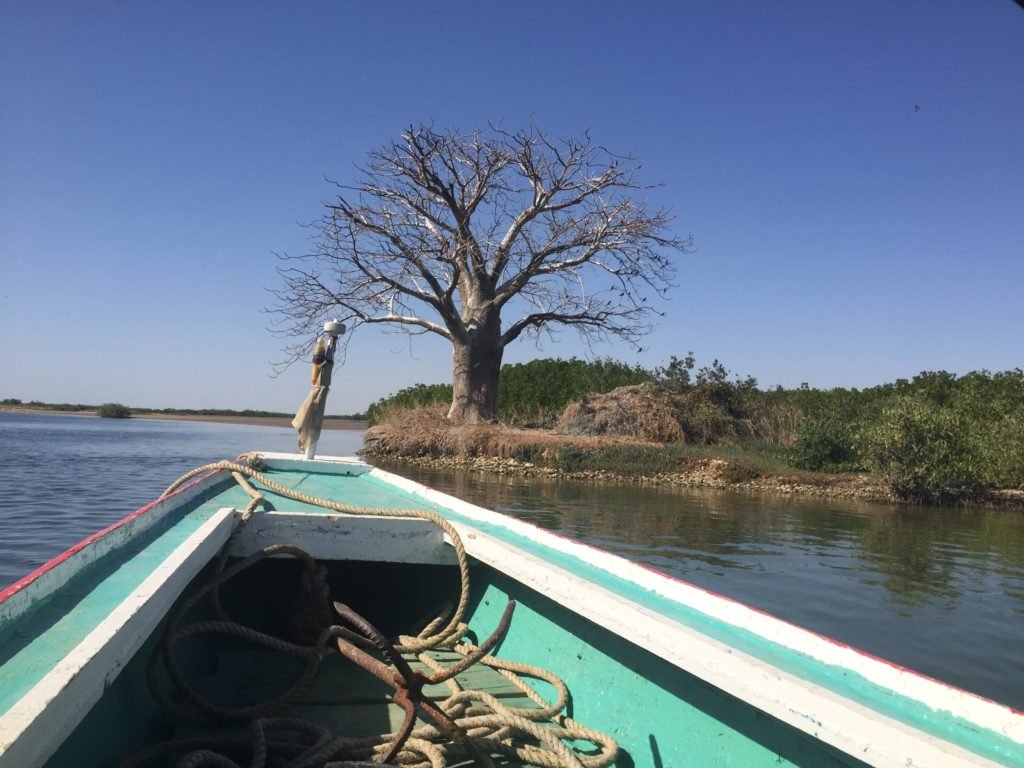
You should be able to get a sept-place from the dock back to Joal quite quickly and on to Mbour from there.
The basics
Food. There’s a giant Auchan (supermarket) next to the Gare. Blue Africa, right on the beach does ok food – better by a long shot and just up the road towards the Grand Hopital, is Alain et Elly.
Beds. I stayed at Dalal ak Jamm (20 000 CFA for a double) and definitely recommend it for friendly owners, nice pool, and the location just a stone’s throw from the beach and from the collective station by the Grand Hôpital.
Transport. There’s a ‘station’ for collective taxis right across from the Grand Hôpital. It’s 100 CFA per person on the standard loop running through the city to the big Gare next to Auchan. The Gare is pretty big and kind of confusing at first, but you’ll see that vehicles are grouped together by destination and signposted (kind of).
Money. There are a couple of ATMs at the Auchan shopping centre and nearby, and more along the Route National.
How to get from Mbour to Dakar
Take a collective to Croix M Saly. It’s a major intersection past the Gare, where you can wait for the next sept-place going to Dakar. A seat costs 2000 CFA. Get out at Pikine, the huge Gare on the way into Dakar. Outside in the road, flag down a taxi to go the rest of the way into the city. It’s about 2-2500 CFA in to Yoff.
Onward travel from Senegal
Our first visit to Senegal was part of a larger road trip by public transport all the way down to Sierra Leone. We went through The Gambia and back into Senegal in the Casamance, and then on to Guinea-Bissau.
The Gambia
We got to The Gambia from Dakar in a sept-place to Karang, the border-crossing. From there we took a bus to Barra and then a ferry to Banjul. It took a whole, very long day. The Gambia is visa-free for most nationalities. In Banjul we stayed at the Princess Diana Hotel, and got our visas for Sierra Leone and Guinea-Bissau, both in one day.
What’s it like? See my stories about The Gambia.
The Casamance
We took a sept-place from Brikama (The Gambia) to Ziguinchor (back in Senegal). From there we got a bus to Cap Skirring. There is a nice long beach at Cap Skirring, and the town itself has good places to hang out (try Cafe Resto for great food) but the best thing to do is hire yourself a scooter and go exploring to other villages and beaches nearby.
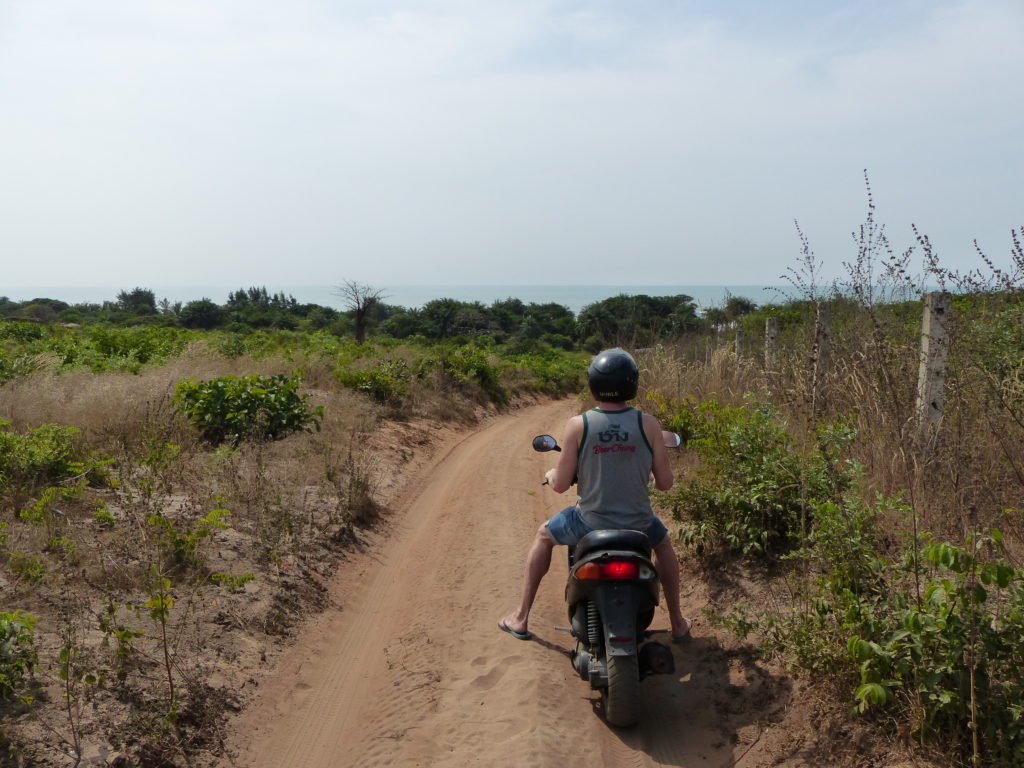
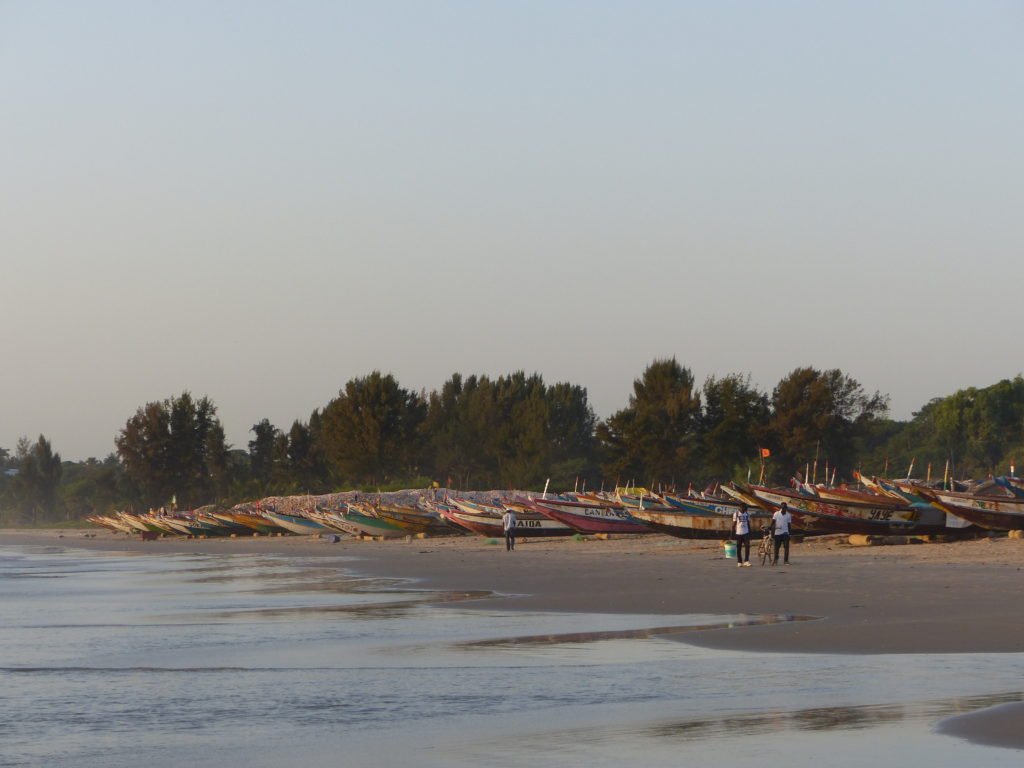
What’s it like? See my stories about the Casamance.
Guinea-Bissau
From Cap Skirring we went back to Ziguinchor, and caught an early morning sept-place to the border crossing at Ingore/Sao Domingos. On the other side we picked up a minibus the rest of the way to Bissau.
What’s it like? See my stories about Guinea-Bissau.
Packing list
Senegal is the sort of place where it’s better to come prepared. In addition to season-appropriate clothing, here are a few things you should bring:
- bug spray, malaria tablets and a mosquito net. Malaria is not something you want to get and healthcare is not good.
- USD. Bring a couple of hundred dollars with you as an emergency stash which you can change as needed.
- Sunscreen. It can be hard to find outside Dakar.
- a flashlight for regular power outages and blackouts
- powerbanks, again, for use against unreliable power supply
- a padlock for your bag or your door if the lock provided is no good.
- Yellow Fever certificate. Get the vaccination and bring the certificate with you.
- copies of your passport. Useful to carry on you for checkpoints, and if you are going to be applying for onward visas along the way.
- Motorcycle helmet. Either that, or stay off the bikes.
Useful apps
- If you haven’t already got WhatsApp, install it. Everyone uses it and it’s handy for planning with guides and drivers and so on.
- Google Translate with a French dictionary loaded.
- The XE app is great for exchange rates. Set the currencies you need in advance and you can use it offline.
- Maps.me. Download the map for Senegal to your phone in advance. Also works offline.
Read more
To read more about our adventures (and misadventures) in Senegal, check out my stories from the road.
Or, follow the entire trip from Dakar to Freetown.



